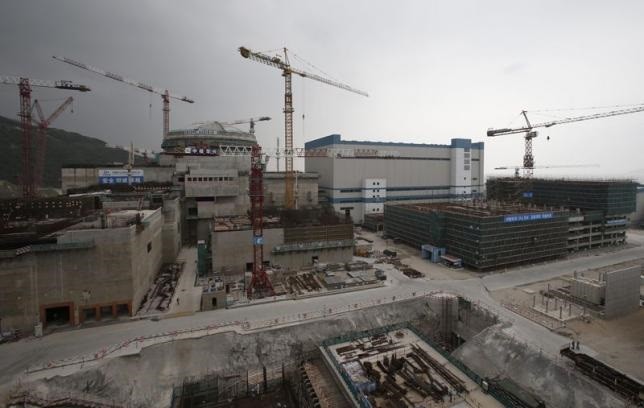China is planning to export indigenous technologies and expand the use of clean energy as part of the main themes of its nuclear power industry and its commitment to be a responsible, climate-conscious country and a leading global nuclear player in the future, China Daily reported.
The report cited the opening of six nuclear reactors last year and the permit given by government for the construction of eight more domestic reactors.
In November, China signed a $6-billion deal with Argentina to build a nuclear plant, the South American country's fourth, as part of effort to export the technology.
Three nuclear power plants are also likely to be built in the United Kingdom, with possible use of Chinese nuclear technologies.
The report also cited the agreement signed last week by China and Saudi Arabia, aiming for the development of home-grown fourth-generation nuclear technology in the Middle East country.
Experts said that China's innovation, safety and popularization of its technologies has made it stand out among other players.
With nuclear power entrenched in China's 13th Five-Year Plan (2016-2020), the country has now 28 nuclear reactors in operation with an installed capacity of about 25.5 gigawatts. An additional 30 gW is expected to be generated by the nuclear plants now under construction and those approved for construction, the report said.
Xu Yuming, deputy director of the China Nuclear Energy Association, said that the current program would enable the country to emerge as the largest market for nuclear power plants.
"Speed (of executing nuclear power projects) is not the goal. We should put safety above everything, and improve our ability to innovate and develop our own technologies for use domestically, while at the same time paving the way for their export, as per the new five-year plan," Xu said.
In 2011, China had suspended approval for new reactors as part of the safety-first principle, following the Fukushima nuclear crisis in Japan, while it reviewed safety standards at existing nuclear facilities.
In March last year, the government approved the construction of units 5 and 6 of Hongyan River nuclear power plant in Liaoning Province, the first such project to receive approvals in four years.
The report said that starting in May 2015, the government issued construction permits to units 5 and 6 of Fuqing nuclear power plant in Fujian Province, units 3 and 4 of Fangchenggang nuclear project in Guangxi Zhuang Autonomous Region, and units 5 and 6 of Tianwan nuclear power plant in Jiangsu Province.
Experts said the country's efforts to use more nuclear power in the future is part of China's pledge to the international community to reduce carbon emissions and generate 20 percent of its electricity from clean energy sources by 2030.
Based on estimates in the draft of the 13th Five-Year Plan (2016-2020), Xu said China could possibly add five or six nuclear reactors every year from 2016 to 2030.
"By then, nuclear power will account for 8 to 10 percent of the total energy mix," Xu said. Its current share is about 2 percent.
China is planning to have at least 110 nuclear reactors running by 2030, making it one of the largest nuclear energy users in the world.



























